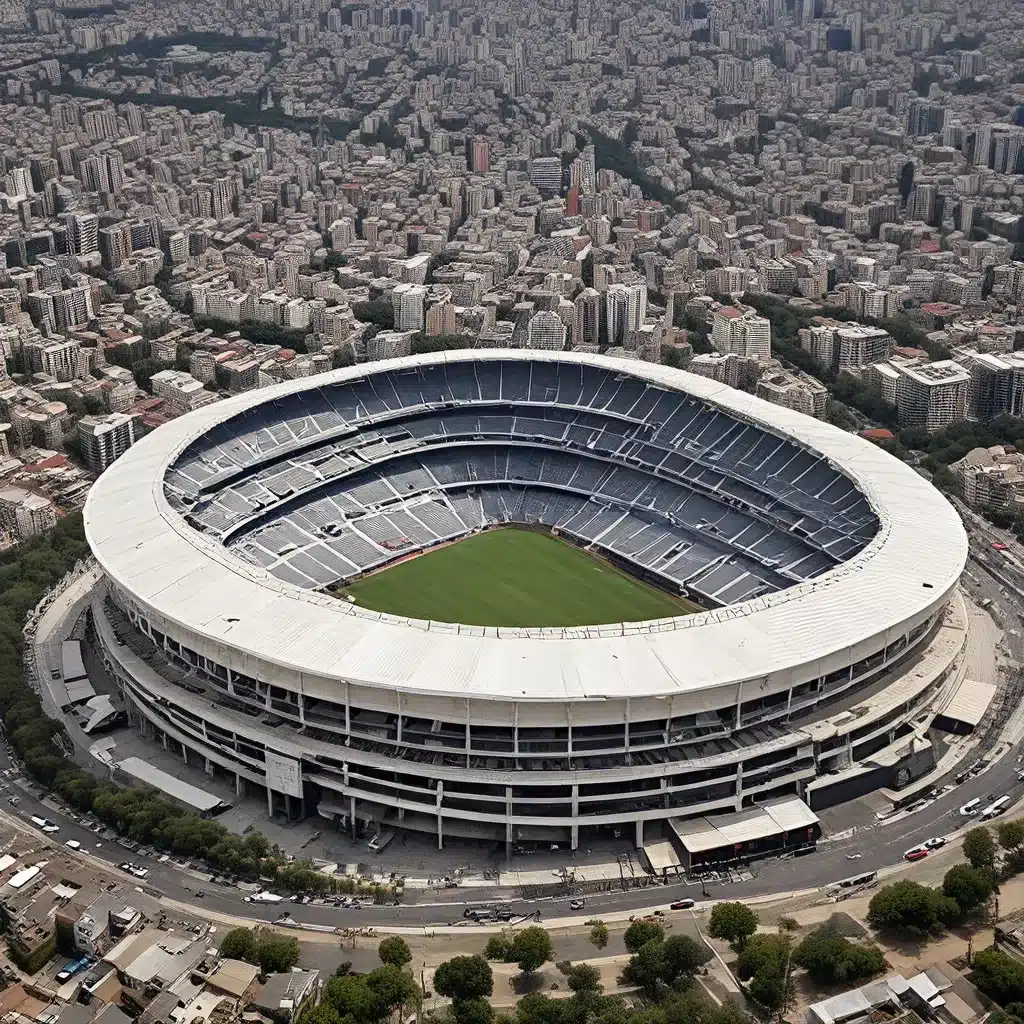
Estadio Azteca, located in the heart of Mexico City, is a true marvel of sports engineering and architectural design. As the largest stadium in Mexico, with a seating capacity of over 87,000 spectators, this iconic venue has witnessed some of the most memorable moments in the history of football (soccer). From hosting two FIFA World Cup finals to serving as the home ground for the legendary Club América, Estadio Azteca has cemented its place as a legendary landmark in the world of sports.
The Grandeur and Architectural Significance
Estadio Azteca’s colossal size and state-of-the-art facilities make it a fitting venue for major sporting events and concerts. The stadium’s impressive architecture is inspired by the iconic pyramid-shaped temples of the Aztec civilization, paying homage to Mexico’s rich cultural heritage. This unique design not only adds to the stadium’s visual appeal but also contributes to its impressive acoustics, creating an electrifying atmosphere during matches.
The construction of Estadio Azteca was an engineering marvel in itself. Completed in just two years, the project required the coordination of thousands of workers and the utilization of innovative technologies. The stadium’s hybrid grass playing surface, a combination of natural grass reinforced with artificial fibers, ensures optimal playing conditions even in adverse weather conditions. This attention to detail and engineering excellence has helped Estadio Azteca maintain its status as a top-tier sporting venue for decades.
Hosting the World’s Biggest Sporting Events
Estadio Azteca’s crowning achievements are the two FIFA World Cup finals it has hosted – in 1970 and 1986. These prestigious events cemented the stadium’s legacy as a true icon of international football. In 1970, the world watched as Brazil triumphed over Italy to claim their third World Cup title, with the match taking place at Estadio Azteca. Sixteen years later, the stadium witnessed another historic moment, as Argentina emerged victorious against West Germany to win their second World Cup.
Beyond the World Cup finals, Estadio Azteca has also played a crucial role in other major sporting events. During the 1968 Summer Olympics in Mexico City, the stadium served as the venue for the opening and closing ceremonies, as well as several athletic competitions, further solidifying its place in sports history.
Old Stadium Journey invites you to explore the rich history and captivating stories that have unfolded within the walls of Estadio Azteca, a true testament to the power of sports and the enduring spirit of the Mexican people.
Iconic Moments and Legendary Performances
Estadio Azteca has been the backdrop for countless iconic moments in football history. Perhaps the most infamous of these was Diego Maradona’s “Hand of God” goal during the 1986 World Cup quarterfinal match between Argentina and England. This controversial yet mesmerizing moment has continued to captivate and divide football fans worldwide, cementing Estadio Azteca’s legacy as a stage for both triumph and controversy.
But Estadio Azteca’s significance extends far beyond just football. The stadium has also hosted numerous legendary musical performances, welcoming the likes of Michael Jackson, U2, and the Rolling Stones to its stage. These iconic concerts have further cemented the venue’s status as a cultural landmark that transcends the boundaries of sports.
The Challenge of Altitude and the Passion of the Fans
One of the unique challenges that Estadio Azteca poses for visiting teams is its high altitude. Situated at an elevation of approximately 7,200 feet (2,200 meters) above sea level, the stadium’s thinner air can have a significant impact on players’ stamina and performance. This added challenge has often given the home team, Mexico’s national football team, an advantage when playing at Estadio Azteca.
However, the stadium’s most formidable asset is undoubtedly its passionate fan base. The Mexican supporters, known as “El Tri,” fill the stadium with their electric energy and unwavering loyalty, creating an atmosphere that is simply unmatched. The sheer size of Estadio Azteca, combined with the fervent devotion of its fans, can be an overwhelming experience for opposing teams, further reinforcing the stadium’s reputation as a daunting and intimidating venue.
Embracing the Future while Preserving the Past
Despite its rich history and enduring legacy, Estadio Azteca has not remained stagnant. Over the years, the stadium has undergone various renovations and upgrades to keep pace with modern standards and enhance the spectator experience. Improvements to the seating facilities, infrastructure, and overall fan amenities have ensured that Estadio Azteca continues to meet the evolving needs of the sports and entertainment industry.
Yet, even as Estadio Azteca evolves, it remains a testament to Mexico’s football heritage. The stadium features a museum that celebrates the country’s football history, showcasing the iconic players, teams, and moments that have shaped the sport’s legacy. Visitors can immerse themselves in the rich tapestry of Mexican football, while also experiencing the grandeur and significance of Estadio Azteca itself.
Conclusion: A Landmark that Transcends Sports
Estadio Azteca is more than just a stadium – it is a cultural icon that has become a symbol of Mexican pride and passion. Its colossal size, awe-inspiring architecture, and rich history have made it a must-visit destination for sports enthusiasts and casual travelers alike. Whether you’re witnessing a thrilling football match, attending a legendary concert, or exploring the stadium’s museum and guided tours, Estadio Azteca offers an unforgettable experience that celebrates the power of sports to unite and inspire.
As you step into the hallowed halls of this magnificent venue, you can’t help but feel a sense of reverence and wonder. Estadio Azteca stands as a testament to the enduring spirit of the Mexican people, a place where the passion for football and the celebration of cultural heritage come together in a harmonious and captivating display. It is a stadium that transcends the boundaries of sports, leaving an indelible mark on all who have the privilege of experiencing its grandeur.

